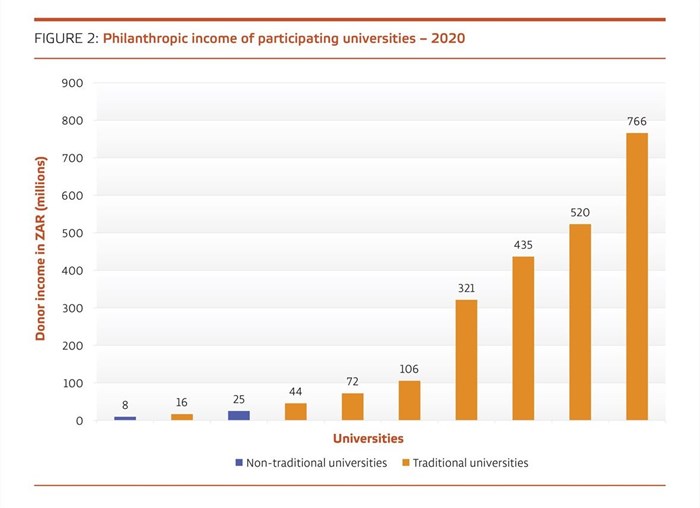
South African universities saw a remarkable increase in philanthropic income in 2020, valued at R2.31bn, nearly double 2019 funding. When Sector Education and Training Authority (Seta) income is also included (funding from skills development and training organisations), the total reached R2.66bn.
Now in its eighth edition since it was launched in 2013, the Annual Survey of Philanthropy in Higher Education (ASPIHE) provides comprehensive data and analysis on philanthropic support to South African universities.
To ensure continuity with previous research, the latest study is based on philanthropic funding during 2020, a year marked by the global Covid-19 pandemic. It sheds light on the challenges faced by universities in South Africa at that time, as well as the resilience they showed in navigating the crisis.
This upward trend in giving highlights the commitment of donors in addressing pressing pandemic issues such as emergency relief, medical research and digital technology support, says Professor Beverley Thaver, Professor in Higher Education Studies, University of the Western Cape, and lead researcher, ASPIHE.
Key findings from the ASPIHE 2020 report include:
More donors: Some 11 244 donors contributed to 10 institutions in 2020, compared with 4,355 donors in 2013.
Parity in giving: The proportion of income from international donors, 50%, was matched by South African sources. This suggests robust levels of civic responsibility by South Africans, says Professor Thaver.
Shift in allocation: Unlike previous years, when student funding received the bulk of philanthropic support, the pandemic caused a significant shift. Some 40% of funds were directed to infrastructure, such as vaccination stations, and less than 30% to student funding.
Greater staff investment: The 10 participating universities employed 178 full-time and part-time staff in fundraising, development and alumni relations by 31 December 2020. This was just below 2019 and 2018 figures, and an increase from the total of 136 staff in the 2013 sample.
“The numbers suggest that the more an institution spends on attracting philanthropic income, the higher the income amount. That is, the more fundraising, alumni relations and associated support staff an institution has, the higher its philanthropic income. Nonetheless, the higher the income received, the greater cost. Three institutions had expenditure ratios ranging from 18% to 40%, way above the international benchmark of between 8% and 12%.”
South African universities are divided into three types: traditional universities which offer theoretically-oriented university degrees; universities of technology which offer vocational-oriented diplomas and degrees; and comprehensive universities which offer a combination of both types of qualification.
Shift in Seta strategy: Non-traditional universities have generally been more successful at attracting Seta funding. The top earners of Seta income in 2020, however, were traditional universities, a reversal from the previous year. This suggests traditional institutions increasingly target Setas for funding
Skewed income distribution: Traditional universities received a disproportionate share of philanthropic income. In 2020, traditional universities accounted for 99% of total donor income, leaving non-traditional institutions with just 1%.


“The stark inequality in the donor income totals between traditional and non-traditional universities has been persistent and the gap is growing. Previous reports have pointed to deep and complex historical, political, and structural factors that continue to disadvantage most institutions that are not classified as traditional by the South African Department of Higher Education,” says professor Thaver.
“The hard question here is whether this is not in effect reproducing past discriminatory legacy practices. Perhaps international philanthropy might consider collaborative joint strategies aimed at greater, collective social impact. This could leverage resources in ways that can strengthen as well as grow all institutions to deliver on their mandates.”
It might also be worthwhile to reflect on internal environmental and contextual factors that enhance or possibly limit higher education’s ability to function and operate optimally, she says.
The 10 universities that participated in the latest research were the Durban University of Technology (DUT); Tshwane University of Technology (TUT); University of Cape Town (UCT); University of the Free State (UFS); University of Johannesburg (UJ); University of KwaZulu-Natal (UKZN); University of Pretoria (UP); Stellenbosch University (SU); University of the Western Cape (UWC); and University of the Witwatersrand (Wits).